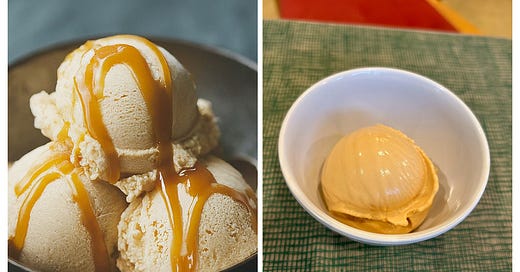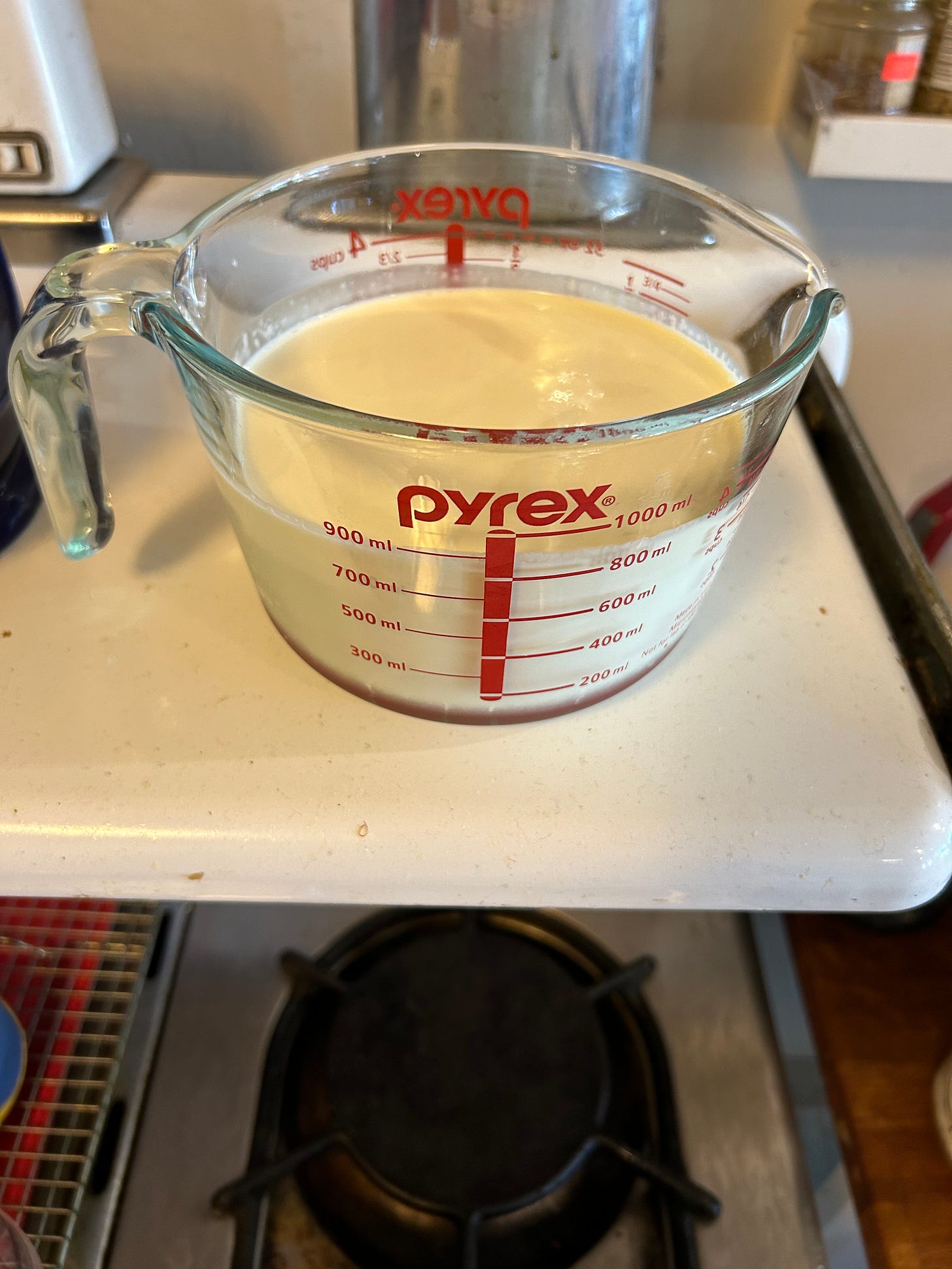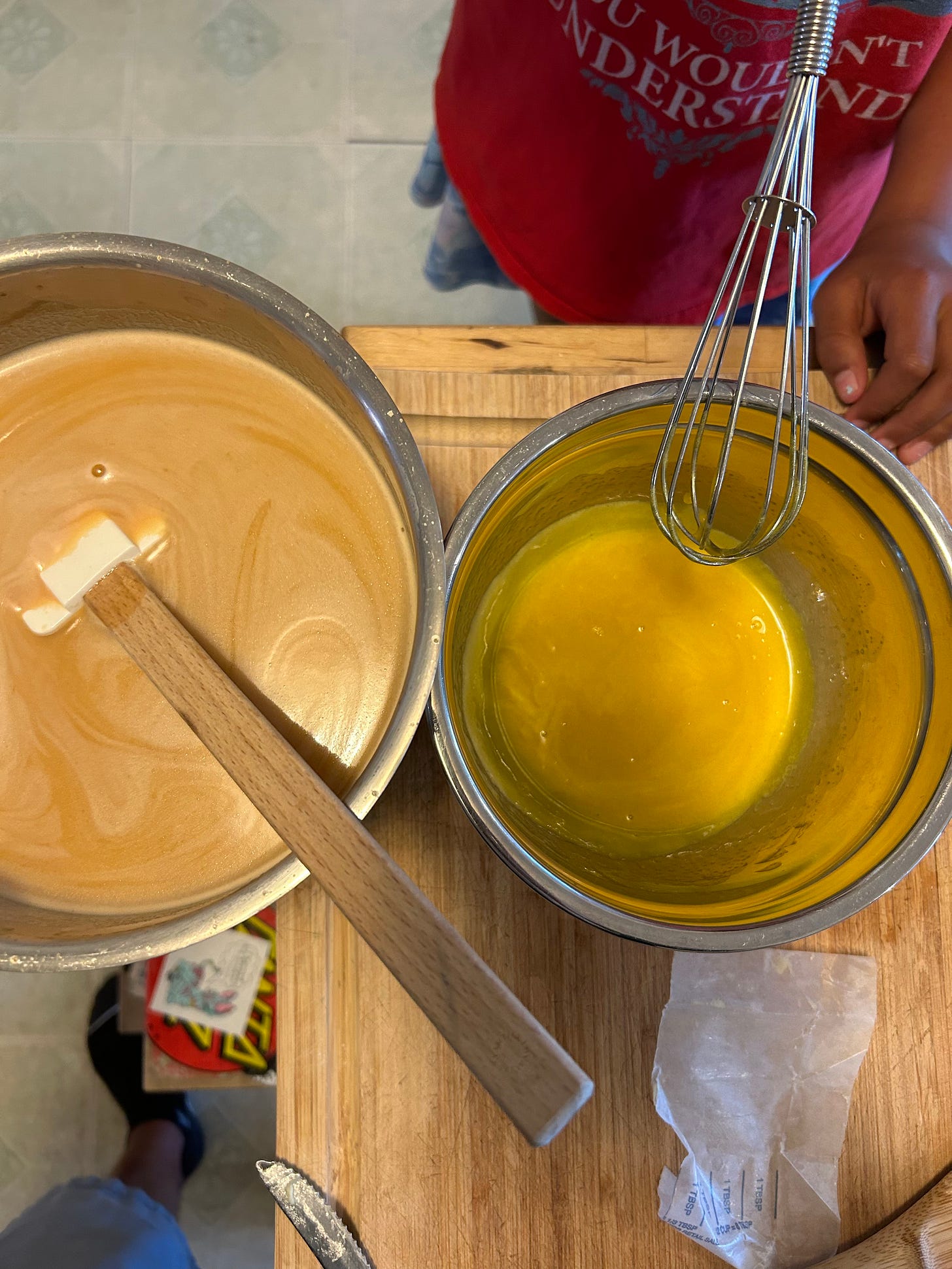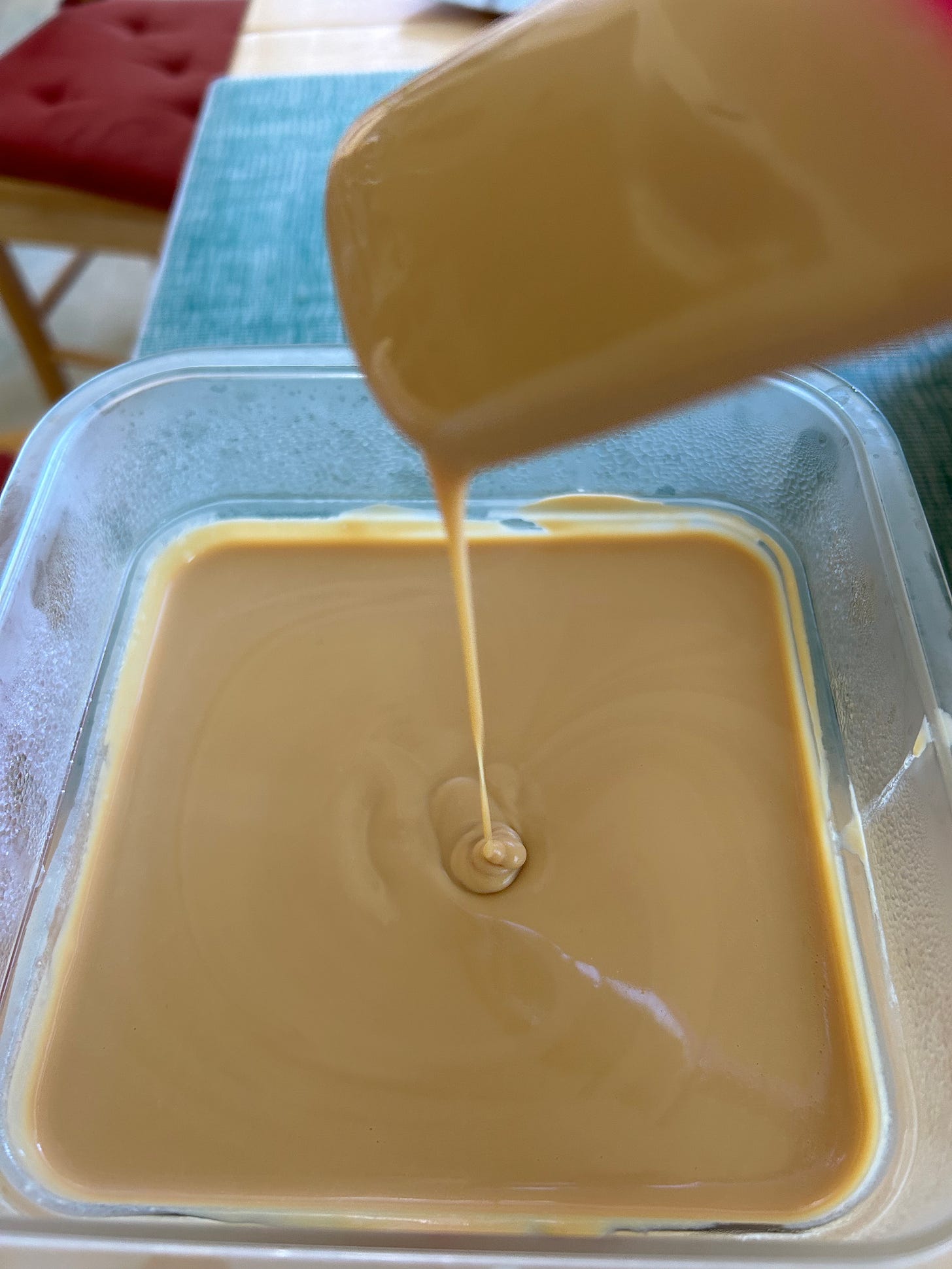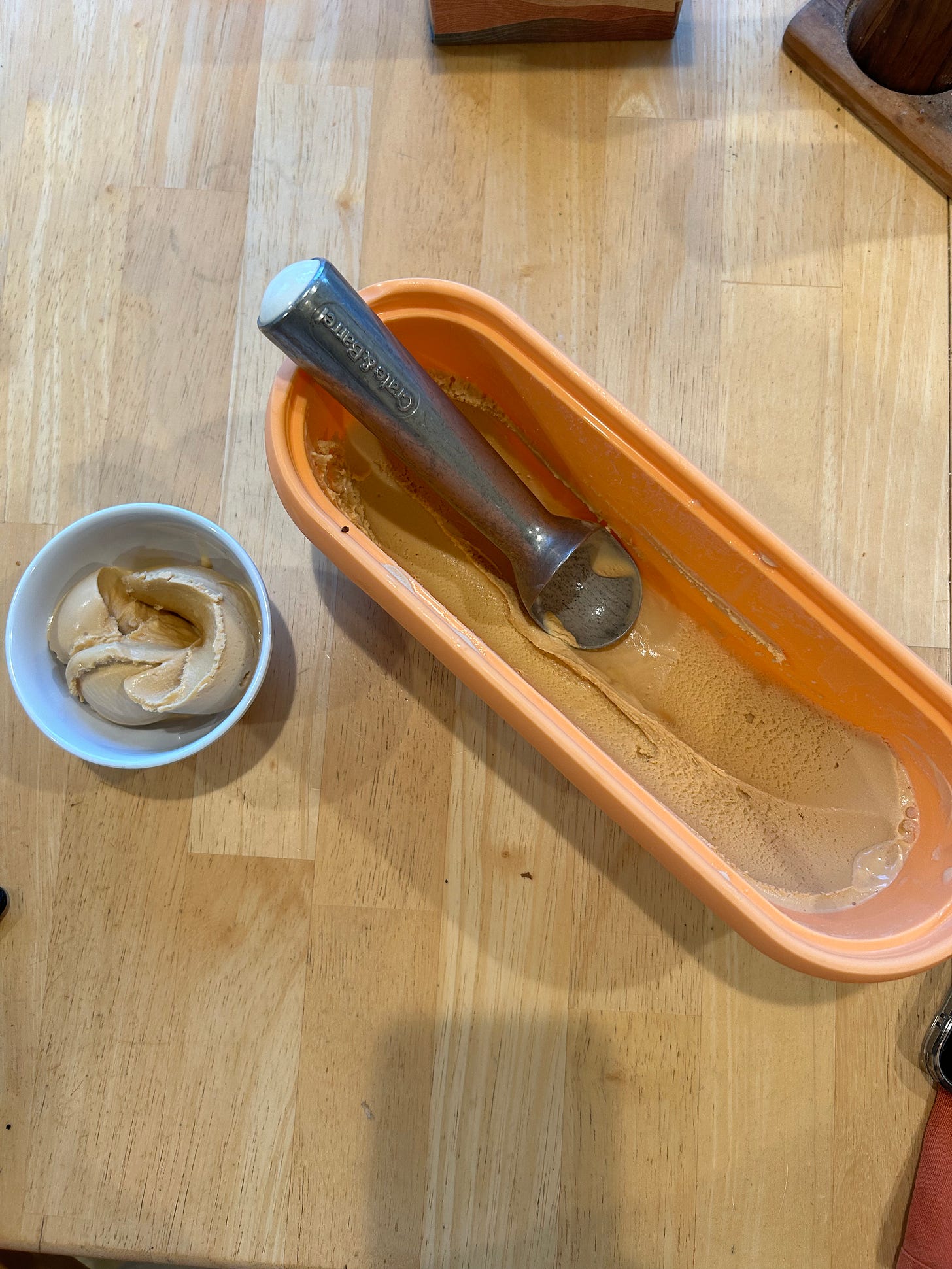I’m old enough to remember when salted caramel wasn’t a standard offering at your nearby ice cream shop or local grocery store. I can’t say this with any certainty, but I seem to recall it becoming more widely available sometime around the mid-to-late 2000s. This was around the time when foodie culture was really taking off, when maple bacon ice cream was a thing. During those heady days, it felt like salted caramel was the ice cream of the moment.
The salted caramel craze probably peaked sometime around 2011 or 2012, when Ample Hills Creamery first opened and introduced their “Salted Crack Caramel” flavor to the world. It has since become a standard flavor for many ice cream brands. Ben & Jerry’s, Talenti, Jeni’s, Whole Foods. They all sell some type of Salted Caramel. Even Safeway has a Salted Caramel Pretzel flavor. And now, dear readers, it is our turn, to give it a try.
This week’s recipe was selected by my daughter. It comes from The Ice Creamery Cookbook by Shelly Kuldunski, a perhaps lesser-known ice cream cookbook, and one of only two that I currently own. My daughter had been asking me to make a salted caramel ice cream for some time, and the recipe in Kuldunski’s book seemed like a good choice: simple and straightforward. No overly elaborate caramel-making process (i.e. no candy thermometer required) or fancy mix-ins. Just sugar and salted butter to make a salted caramel, which is then mixed with cream and egg yolks.
The first step is to make the caramel. Unlike some of the recipes of the past few weeks, this one is pretty technical and has lots of points where things can go wrong…starting with burning (overcooking) the caramel.
You put the sugar in a saucepan and heat it until it melts. Then you cook it until it turns into that recognizable, golden, caramel color. It’s tricky and you don’t want to overcook/burn it, but according to David Lebovitz (who I’ll say more about next week), you don’t want to underdo it either, or you won’t achieve the classic caramel flavor.

The next part is tricky too, because you have to gradually add the butter and milk-cream mixture, but in a way so that the caramel doesn’t seize up.
But as you can see below, I added everything too fast and the caramel did seize up. The mistake here is that I should have added the butter first, let it completely melt, and then pre-warmed the milk and cream mixture so it didn’t shock the caramel when added. Notes for next time!
Fortunately, I was able to re-melt the caramel and fully incorporate it into the mixture (not sure if it will impact the final product).
Next, you have to temper and then incorporate the eggs.
I should have mentioned that my daughter helped me with the entire process of this ice cream, including separating the egg yolks and taking some of the photos!
We couldn’t quite document the egg tempering process. But here’s a picture of me stirring the mixture with the eggs incorporated to create a custard.
This is another tricky point because, as I mentioned in the Melissa Clark recipe post, you have to be careful not to cook the eggs. This requires a constant stirring / agitation of the eggs.
Once the custard has thickened enough to coat the back of a wooden spoon, you strain it into a bowl that is nested in an ice bath. Like so:
I like to strain it a second time for good measure.
Neither of the strains revealed much in the way of eggy bits, which means we did a good job of making the custard. But sheesh, it sure is quite stressful during those key moments! After we strained it the second time, we stuck it in the refrigerator1 to chill overnight.
Check out the consistency of this batter right before we put it in the machine:
And now for your obligatory churning video:
How did it taste?
This might be the smoothest and creamiest ice cream I’ve made yet. Almost reminiscent of a luscious gelato! The smooth and creamy texture is encapsulated by how easily it scooped up:
As far as the taste, it was excellent. Like a classic caramel candy, with the saltiness coming through just slightly. My daughter loved it, as did my wife, but I should note that both sprinkled a bit of sea salt on top for added saltiness. I also thought it was excellent. My son, however, thought it was a bit too sweet, and I can see why he might say that. It is certainly a very rich ice cream. You can tell that the sugar content is high when you taste it. It’s so rich and sweet that it almost hurts your teeth, if that makes sense.
Overall, a very tasty ice cream that I would recommend eating in small doses. Would be excellent with a scoop of vanilla or strawberry and some chocolate sauce. The most important thing, though, is that my sous chef / apprentice / daughter enjoyed both making the ice cream and eating it. As much as we adults might enjoy eating ice cream, at its heart, it’s all about the kiddos.
Next week: I’ll be introducing you to a man who’s made some good choices in life—David Lebovitz—and his vegan-but-tastes-like-real-thing-chocolate ice cream. I’m also making a few ice creams for a family event and a few more for a work event, so I may do a post or two before the Lebovitz post.
Either way, I’ll see you soon!
Forty-some-odd years of speaking the English language, and I still often try to add a “d” to the word “refrigerator.”

